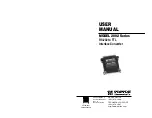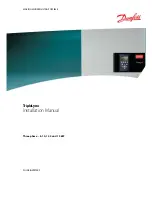
H0 Sound Decoder MX640 Page 5
CV
Designation
Range
Default Description
#29
Basic
configuration
CV #29 is calculated by
adding the value of the
individual bits that are
to be “on”:
Values to turn “on”:
Bit 0: 1
Bit 1: 2
Bit 2: 4
Bit 3: 8
Bit 4: 16
Bit 5: 32
Bit 6: 64
Bit 7: 128
ZIMO MX21, MX31…
cabs also display the
individual bits;
calculating bit values is
no longer necessary!
0 - 63
2
Bit 0 - Train direction:
0 = normal, 1 = reversed
Bit 1 - Number of speed steps:
0 = 14, 1 = 28
Note: 128 speed steps are always active if corresponding in-
formation is received!
Bit 2 - DC operation (analog): *)
0 = off 1 = on
Bit 3 - RailCom („bidirectional communication“)
0 = deactivated
1 = activated see CV #28!
Bit 4 - Individual speed table:
0 = off, CV # 2, 5, 6, are active.
1 = on, according to CV ‘s # 67 – 94
Bit 5 - Decoder address:
0 = primary address as per CV #1
1 = ext. address as per CV #17+18
Bits 6 and 7 are to remain 0!
In this CV you can only change the setting of Bit 0, 1, 2, 3, 4 and 5. Bits 6 and 7 have to remain
OFF because they are not yet used for anything. To calculate the total CV value you have to first
look at the description field of that CV and determine which Bit (switch) you want to have ON. Let’s
say we want speed steps 28 active, reverse the loco’s direction because it doesn’t agree with the
cab’s direction indicator and we want to use the individual speed table. This means we have to
have the Bits 1, 0 and 4 turned ON (= 1). All other Bits can be OFF (= 0). In the “Designation” field it
shows the value for each Bit: Bit 0 = 1, Bit 1 = 2, Bit 2 = 4, Bit 3 = 8, Bit 4 = 16, Bit 5 = 32, Bit 6 =
64, and Bit 7 = 128. By the way, the Bit numbering and their values are the same for all CV’s used
in this way, not just CV #29. If we want to have Bits 1, 0 and 4 turned ON we add up the values for
these Bits (2 + 1 + 16) and enter the total of 19 to CV #29.
Lastly there is a third kind of CV that sort of fits between the other two. Here you don’t have to cal-
culate Bit values. With those CV’s the digit’s position and value determines a specific action. Some
of those digit positions act like a simple ON/OFF switch and others like a volume control. Both of
these kind of settings may be used in the same CV.
For example, CV #56 can be used for fine-tuning a motor:
CV
Designation
Range
Default Description
#56
Back-EMF control
P and I value
0 – 199
(See add.
notes)
0
(is equal
to 55,
mid-
range)
But:
default is
not suit-
able for
coreless
motors,
i.e.
MAXXON,
FAUL-
HABER!
Use
“100”
instead.
Back-EMF compensation is calculated by PID al-
gorithm (Proportional/Integral - Differential);
modifying these values may improve the com-
pensation characteristics in certain cases.
0 - 99: for "normal" DC motors (LGB etc)
100 - 199: for coreless (MAXXON, Faulhaber,
etc...)
Tens digit: Proportional (P) value; by
default (0) is set to mid value and
automatic adjustment with the goal
of jerk free running. Proportional
effect can be modified with settings
of 1 – 4 and 6 – 10 (instead of the
default 0 = 5).
Ones digit: Integral (I) value; is set by
default to a mid value.
The Integral effect can be modified
with settings of 1 – 9 instead of
the default 0 = 5).
As you can see in the “Range” field, you can use any number between 0 and 199. However if you
read the “Description” field it explains that each digit position controls a specific function. In this
case, the hundredth digit (_xx) sets the decoder up for a coreless motor, the tens digit (x_x) modi-
fies the proportional and the ones digit (xx_) the integral action. The hundredth digit in this case
acts just like a switch. If you use the hundredth digit (1__) the coreless motor function is turned ON.
If you don’t use it (_xx), the function is turned OFF. So for a normal DC motor you would only use
the ones and tens digit. With the tens digit (0 – 9) you can modify the proportional value and with
the ones digit (0 – 9) the integral value.
Don’t worry about the terms “proportional” or “integral” - just use the
“Step by step CV adjustment
procedure”
later in the manual.






































